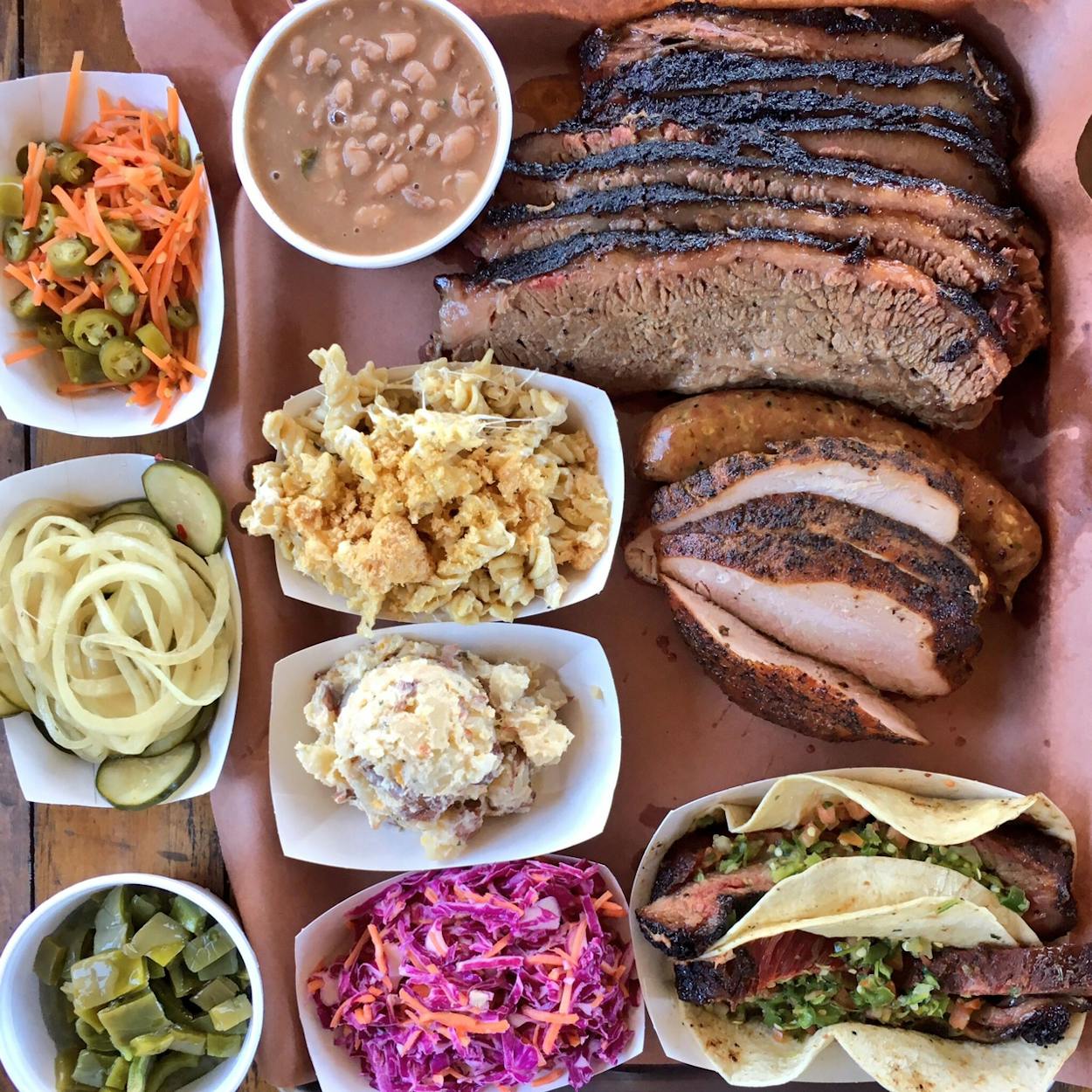Barbecue has a sweet tooth. Sugar is the go-to enhancer in rubs, barbecue sauces, and injections, most of which become a candy coating that masks the flavor of the defenseless meat beneath. It’s an epidemic in competition barbecue, where honey, brown sugar, and any number of jellies are used to trigger our most primitive flavor reactions. “In truth, the entire mouth goes crazy for sugar, including the upper reaches known as the palate,” author Michael Moss notes in his book Salt Sugar Fat. “There are special receptors for sweetness in every one of the mouth’s ten thousand taste buds, and they are all hooked up, one way or another, to the parts of the brain known as the pleasure zones.” So who can blame competitors for manipulating their human judges? It’s biology.
But this sugar crutch is extending outside of the competition circuits. Syrupy rib glazes have become far more common over the past few years, and sauces just keep getting sweeter. The same issue exists on store shelves, where new barbecue sauces are as stiff as jam. A new “Classic Sweet & Thick” sauce from Heinz is a whopping 43 percent sugar—as much as some chocolate sauces. It takes some flavor engineering to make a barbecue sauce that sweet—I’ll give it that—but I wouldn’t call that progress. And what’s the remedy to this growing trend? Throw some acid on it.
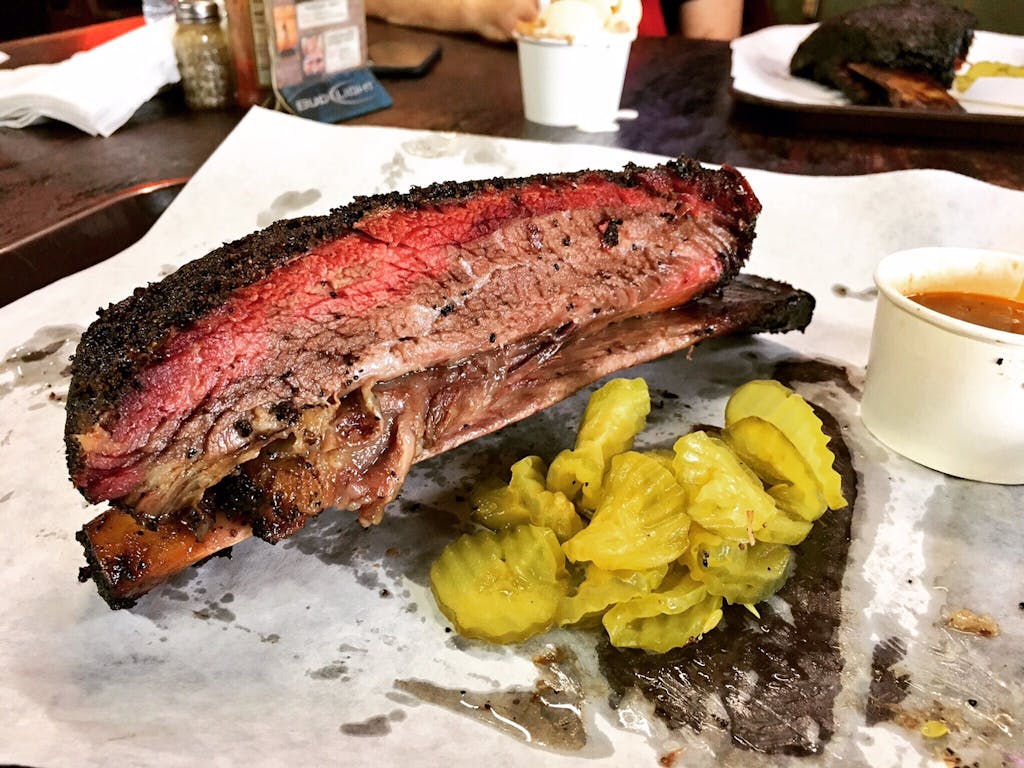
After a platter of fatty meats like brisket, beef ribs, and pork belly, my palate needs some relief, and thick, sweet sauce pooled on top of barbecue isn’t going to offer it. Dill pickle chips are an obvious choice, but an acidic barbecue sauce to go with the meat would be a better option. In her new book Salt Fat Acid Heat (similar title to Moss’s, but definitely different content than Salt Sugar Fat), Samin Nosrat discusses the importance of acid in cooking, especially as a complement to fatty, salty dishes like barbecue. “Acid is salt’s alter ego,” Nosrat writes. “While salt enhances flavors, acid balances them.” It’s like the difference between adding a splash of lemon juice onto a pork chop versus a drizzle of honey. The lemon juice helps to balance the fattiness, while honey simply magnifies the heft after your palate pleasure centers have calmed down.
Texas barbecue fans may laugh at the vinegar poured on pork barbecue in North Carolina, but when used with restraint, it works. The mustardy sauces of South Carolina work in the same way. And though Texas sauces may be on the sweeter side today, the basic sauce recipes used by our barbecue forefathers had a lot more vinegar than honey. Take the 1937 Dallas Morning News article, in which the author describes a typical Texas barbecue sauce at the time:
It is made simply of vinegar and hot water, melted butter if the purse allows, or rendered beef suet if not, black and red pepper and salt (pioneer sauce stopped there) and generous dashes of catsup and Worcestershire sauce. Onions and sometime lemons are sliced into it… thicken it slightly with flour and water as thin gravy is thickened.
Even with the addition of ketchup, the sauce would have been a lot closer to one found in North Carolina’s Piedmont region than the bottled “Texas-style” sauces enhanced with corn syrup on store shelves today. Not only would it not be sweet, but it would also fill the nooks in a chopped beef or pulled pork sandwich a lot better than a thick sauce that rests on top like cake frosting. (Try this recipe for a thin, acidic barbecue sauce that works great with fatty pork or beef.)
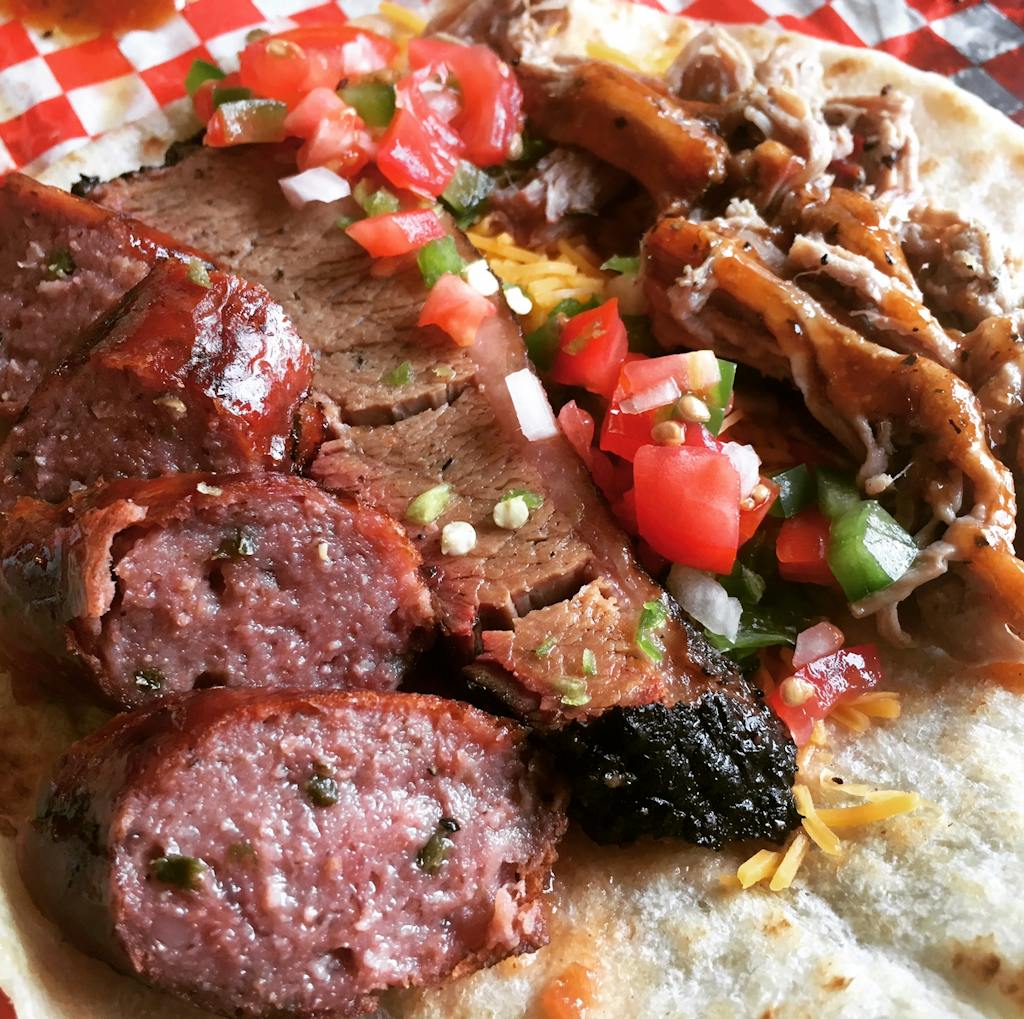
Aside from sauce, there are other ways add acid to a barbecue sandwich. To get it with a crunch, dill pickles and white onions are the ubiquitous option in Texas. But at Corkscrew BBQ, in Spring, they offer the option of pico de gallo as well. (See below for a modified pico recipe that we’re calling “pickle de gallo,” which goes great on a barbecue sandwich.) You can also ask for pico at Young’s BBQ in San Saba, or really just about any barbecue joint serving tacos. At Hometown Bar-B-Que in Brooklyn, they pickle daikon and carrots for a smoked lamb belly banh mi. The lamb belly is so rich and fatty that it needs no sauce for moisture, but without the acidic garnishes it would feel like a lard bomb. All together, it might be the best new barbecue sandwich out there.

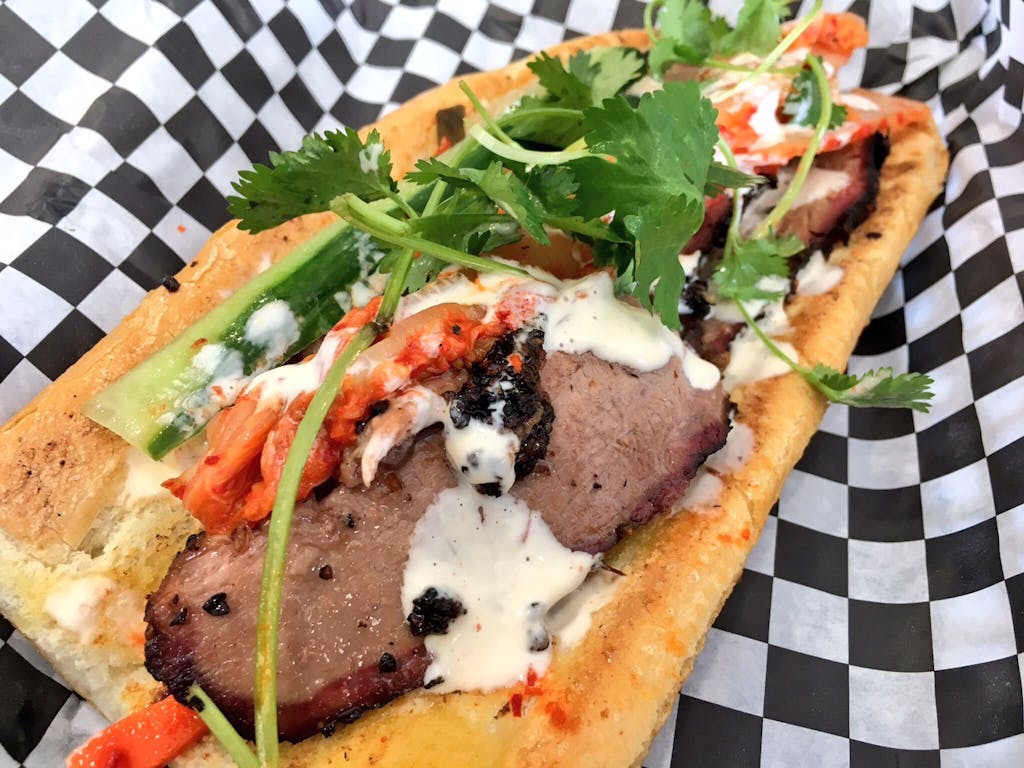
Not to be left out, at least one Texas barbecue joint also serves banh mi. Brotherton’s Black Iron Barbecue adds slices of juicy brisket to the sandwich along with house-made kimchi. The crunchy, fermented cabbage gives a boost of heat and acid that marries well with the brisket.


Up in Connecticut at HooDoo Brown Barbeque they smoke skin-on pork bellies. The skin is shatteringly crisp, and the fat is like a suspended liquid released only upon biting into it. It’s some of the most decadent barbecue you’ll ever eat, and it comes with VooDoo sauce, which it’s more like a garnish. Green onion replaces white onion in this pice de gallo variant, and lime juice provides the tingle along with a splash of vinegar. Miraculously, it lightens the otherwise leaden dish.
In San Antonio, 2M Smokehouse is taking pickles to another level. There’s pico for the tacos, of course, and plenty of dill pickles, but I’d suggest a bite of pickled onions or even nopales after a bite of the fatty brisket. I swear, for better or worse, you’ll be able to eat more brisket if you mix in some pickled nopales between every bite. Pickled serranos and carrots are also available if you really want some kick in your taco. Roegel’s Barbecue and The Pit Room in Houston and The Slow Bone in Dallas are three more spots with a real focus on providing more in the pickle department than just dill chips.
Great barbecue requires a balance of flavors. Too much smoke, an overwhelming amount of seasoning, or the absence of either makes for disappointing smoked meat. Pitmasters tinker with that balance. They hone their techniques to seek greatness in barbecue, but they rarely consider how much acid can help in that balance of flavors. Here’s hoping more barbecue joints trade in the punches of sweetness for a little bite.
RECIPE: Pickle de gallo
1 medium tomato, seeded and diced
1/2 medium onion, finely diced
4 dill pickle spears, or a whole pickle, chopped
1 ounce pickled jalapeños (or try sweet-and-spicy pickled jalapeños), finely chopped
1 lime, juiced
1/2 teaspoon Kosher salt, divided
Place diced tomatoes into a colander or strainer and sprinkle with 1/4 teaspoon of salt. Add diced onions on top and squeeze the juice from half of a lime over top, saving the other lime half for later. Let the tomatoes and onions drain for at least 30 minutes, but preferably for an hour.
After draining, shake off excess water from the tomatoes and onions, and place them in bowl. Add the pickles, pickled jalapeños, juice from the remaining 1/2 lime, and the remaining 1/4 teaspoon of salt. Stir to combine. Place in the refrigerator for at least an hour before serving. This should keep for three days.
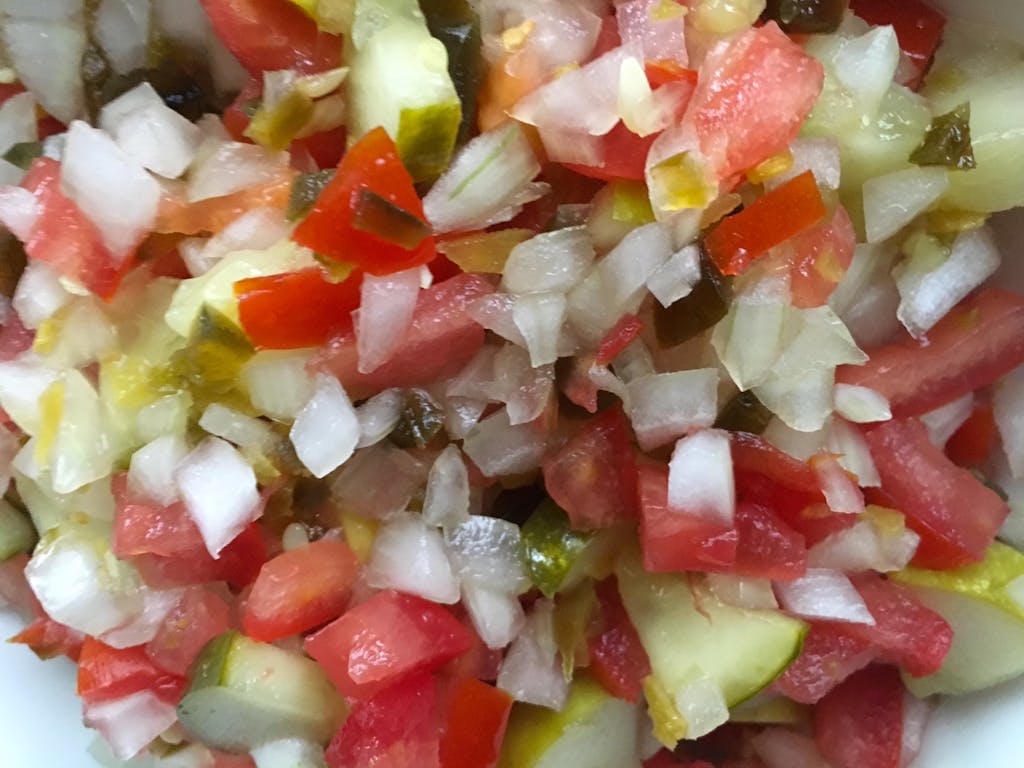
- More About:
- BBQ Recipes


